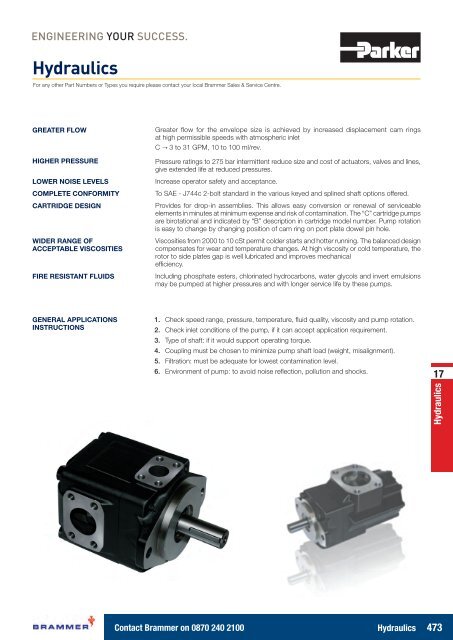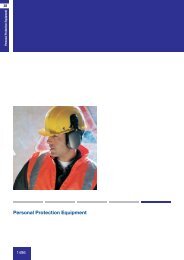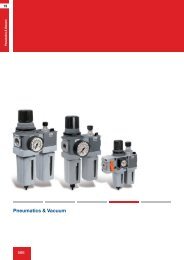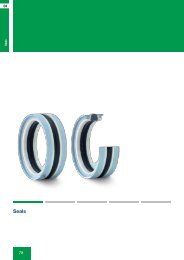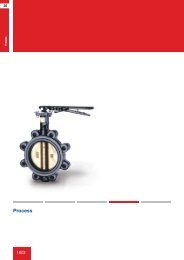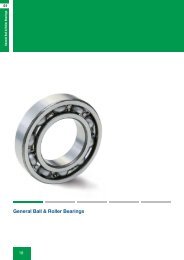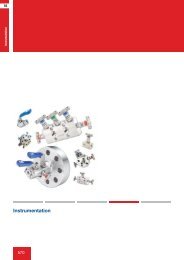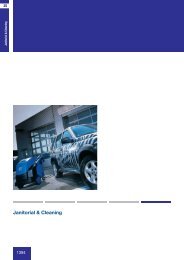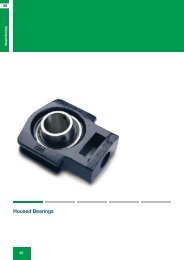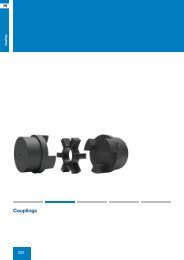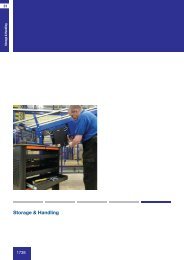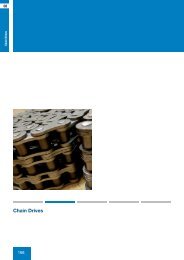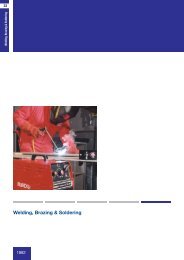2012-13 Hydraulics.pdf - Brammer
2012-13 Hydraulics.pdf - Brammer
2012-13 Hydraulics.pdf - Brammer
You also want an ePaper? Increase the reach of your titles
YUMPU automatically turns print PDFs into web optimized ePapers that Google loves.
<strong>Hydraulics</strong><br />
For any other Part Numbers or Types you require please contact your local <strong>Brammer</strong> Sales & Service Centre.<br />
GREATER FLOW<br />
HIGHER PRESSURE<br />
LOWER NOISE LEVELS<br />
COMPLETE CONFORMITY<br />
CARTRIDGE DESIGN<br />
WIDER RANGE OF<br />
ACCEPTABLE VISCOSITIES<br />
FIRE RESISTANT FLUIDS<br />
Greater fl ow for the envelope size is achieved by increased displacement cam rings<br />
at high permissible speeds with atmospheric inlet<br />
C 3 to 31 GPM, 10 to 100 ml/rev.<br />
Pressure ratings to 275 bar intermittent reduce size and cost of actuators, valves and lines,<br />
give extended life at reduced pressures.<br />
Increase operator safety and acceptance.<br />
To SAE - J744c 2-bolt standard in the various keyed and splined shaft options offered.<br />
Provides for drop-in assemblies. This allows easy conversion or renewal of serviceable<br />
elements in minutes at minimum expense and risk of contamination. The “C” cartridge pumps<br />
are birotational and indicated by “B” description in cartridge model number. Pump rotation<br />
is easy to change by changing position of cam ring on port plate dowel pin hole.<br />
Viscosities from 2000 to 10 cSt permit colder starts and hotter running. The balanced design<br />
compensates for wear and temperature changes. At high viscosity or cold temperature, the<br />
rotor to side plates gap is well lubricated and improves mechanical<br />
effi ciency.<br />
Including phosphate esters, chlorinated hydrocarbons, water glycols and invert emulsions<br />
may be pumped at higher pressures and with longer service life by these pumps.<br />
GENERAL APPLICATIONS<br />
INSTRUCTIONS<br />
1. Check speed range, pressure, temperature, fl uid quality, viscosity and pump rotation.<br />
2. Check inlet conditions of the pump, if it can accept application requirement.<br />
3. Type of shaft: if it would support operating torque.<br />
4. Coupling must be chosen to minimize pump shaft load (weight, misalignment).<br />
5. Filtration: must be adequate for lowest contamination level.<br />
6. Environment of pump: to avoid noise refl ection, pollution and shocks.<br />
17<br />
<strong>Hydraulics</strong><br />
Contact <strong>Brammer</strong> on 0870 240 2100 <strong>Hydraulics</strong> 473


